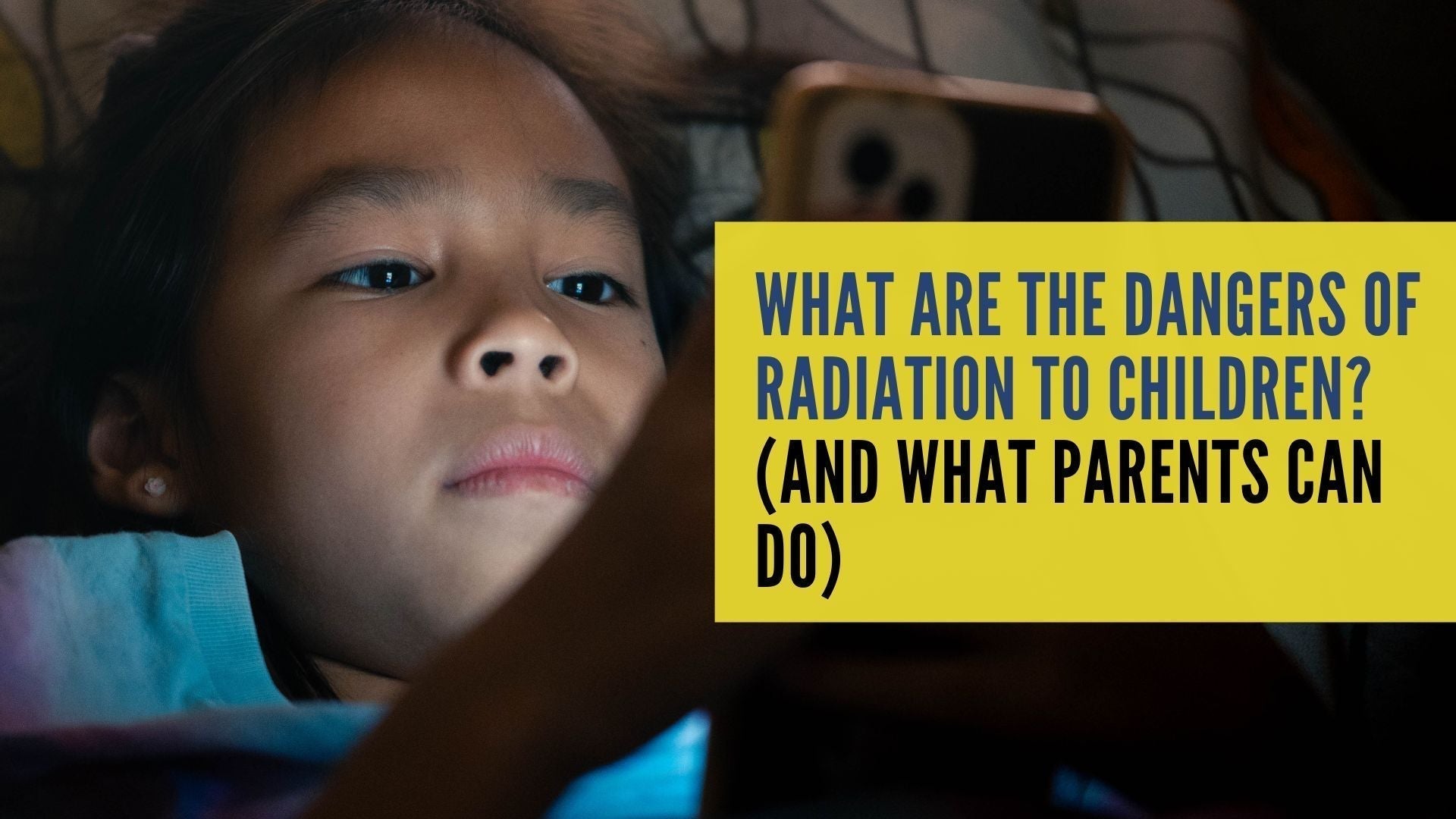In today’s hyper-connected world, exposure to electromagnetic fields (EMFs) has become an unavoidable part of daily life. From smartphones and Wi-Fi routers to smart TVs and appliances, modern living is powered by invisible radiofrequency (RF) and extremely low frequency (ELF) radiation. While many families are becoming aware of EMF exposure in their homes, one question stands out for those living in multi-unit housing: Are EMFs stronger in apartments and condos compared to single-family homes?
The short answer is yes—apartments and condos typically expose residents to higher cumulative levels of EMF radiation due to their density, shared infrastructure, and proximity to neighbors’ devices. This blog explores why that’s the case, what the potential health implications are, and what steps families can take—including the use of EMF protection products like Radia Smart shielding blankets, ponchos, and bed canopies—to create safer living spaces.
1. Why EMFs Tend to Be Higher in Apartments and Condos
Unlike single-family homes, apartments and condos have multiple overlapping EMF sources. This overlap creates a cumulative effect, often leading to higher exposure. Here are the key contributors:
a. Multiple Wi-Fi Networks
In most apartment complexes, every unit has its own Wi-Fi router, all transmitting 24/7. Depending on the building layout, a family could be exposed to signals not only from their own router but also from dozens of neighbors’ routers, often just a few feet away through thin walls.
-
A study measuring Wi-Fi radiation in apartment buildings found that exposure levels were up to 10 times higher in multi-unit dwellings compared to detached homes due to overlapping routers (Mahmoudi et al., 2019).
b. Shared Infrastructure
Apartments often use shared smart meters, electrical panels, and centralized systems, which can increase exposure to both ELF (from electrical wiring) and RF (from smart meters transmitting data wirelessly).
-
Smart meters, for example, emit short bursts of RF radiation throughout the day. In multi-unit buildings, these meters are often clustered, meaning residents near meter banks may be exposed to much higher levels.
c. Proximity to Cell Towers and Antennas
Urban areas, where condos and apartments are most common, typically have a higher density of cell towers and rooftop antennas. Many high-rise buildings even host cellular antennas on rooftops, making top-floor units more exposed.

d. Neighbors’ Devices
From Bluetooth headphones and cordless phones to gaming consoles and baby monitors, EMFs don’t stop at walls. Families in apartments are indirectly exposed to the tech habits of everyone around them, something that isn’t a concern in detached homes.
2. Health Implications of Higher EMF Exposure
While international guidelines, such as those from the International Commission on Non-Ionizing Radiation Protection (ICNIRP), claim current EMF levels are “safe,” growing research suggests that long-term, cumulative exposure may have subtle but concerning effects, particularly for vulnerable populations like children and pregnant women.
a. Children’s Vulnerability
Children absorb more EMF radiation than adults due to their thinner skulls, smaller body size, and developing brains (Christ et al., 2010). Living in apartments where EMFs are stronger increases this cumulative burden.

EMF radiation absorption comparison between children and adult skulls
b. Sleep Disruptions
Exposure to Wi-Fi and RF radiation during the night has been linked to melatonin suppression and sleep disturbances (Halgamuge, 2013). In high-density housing, even if families turn off their own Wi-Fi, they may still be exposed to neighbors’ signals.
c. Electromagnetic Hypersensitivity (EHS)
Some individuals experience headaches, fatigue, brain fog, or skin tingling when exposed to EMFs, a condition known as Electromagnetic Hypersensitivity (EHS). Higher exposure environments like apartments can trigger or worsen symptoms.

d. Long-Term Risks
While research is ongoing, studies have raised concerns about potential links between long-term EMF exposure and issues such as fertility problems, oxidative stress, and increased cancer risk (Hardell & Carlberg, 2015).
3. Practical Steps Families Can Take
The good news is that families don’t need to move out of apartments or condos to reduce exposure. With awareness and simple actions, you can make your living space healthier and safer.
a. Control Your Own Environment
-
Turn off Wi-Fi at night or place the router on a timer switch.
-
Use wired Ethernet connections for computers and TVs when possible.
-
Keep phones on airplane mode during sleep or when not in use.
-
Avoid using wireless baby monitors—opt for wired or low-EMF versions.
b. Create Distance
-
Place your bed and children’s cribs away from shared walls where neighbors’ routers or smart meters might be located.
-
Rearrange furniture so seating and workspaces are not directly next to electrical panels or appliances.
c. Shielding Solutions
For added protection, consider EMF shielding products, which are especially helpful in apartments where exposure from neighbors is hard to control:
-
Radia Smart EMF Protection Blankets: Ideal for kids during sleep, naps, or while using tablets on their laps.
-
Radia Smart Ponchos: Perfect for adults working on laptops or using phones, providing shielding for the torso.
-
Bed Canopies: Create a low-EMF sleeping sanctuary, reducing exposure from nearby routers or antennas.

Radia Smart EMF Shielding Adult Hooded Poncho
Shielding products don’t replace lifestyle changes, but they add an extra layer of safety, offering peace of mind for families living in high-density housing.
d. Monitor Your Environment
Invest in an EMF meter to measure hotspots in your apartment. Awareness helps you make informed decisions—such as where to place beds, desks, and routers.
Conclusion: Safer Living in Apartments and Condos
So, are EMFs stronger in apartments and condos? The evidence says yes—due to overlapping Wi-Fi networks, clustered smart meters, shared infrastructure, and urban proximity to cell towers. While current guidelines suggest these levels are “within limits,” families concerned about long-term health should consider precautionary steps.
By turning off Wi-Fi at night, creating distance, rearranging furniture, and especially by investing in Radia Smart EMF protection products like blankets, ponchos, and bed canopies, parents can dramatically reduce their family’s exposure.
Technology is here to stay, and most of us won’t move away from modern conveniences. But by being proactive, families can enjoy the benefits of connected living while safeguarding what matters most—their health and well-being.
References
-
Christ, A., Gosselin, M. C., Christopoulou, M., Kuhn, S., & Kuster, N. (2010). Age-dependent tissue-specific exposure of cell phone users. Physics in Medicine and Biology, 55(7), 1767–1783.
-
Halgamuge, M. N. (2013). Pineal melatonin level disruption and its potential mechanisms due to electromagnetic field exposure. International Journal of Radiation Biology, 89(11), 937–944.
-
Hardell, L., & Carlberg, M. (2015). Mobile phone and cordless phone use and the risk for glioma – Analysis of pooled case-control studies. Pathophysiology, 22(1), 1–13.
-
Mahmoudi, Z., Mortazavi, S. M. J., et al. (2019). Assessment of Wi-Fi radiation in apartments and potential health concerns. Environmental Research, 169, 494–499.
-
International Commission on Non-Ionizing Radiation Protection (ICNIRP). (2020). Guidelines for limiting exposure to electromagnetic fields (100 kHz to 300 GHz).


